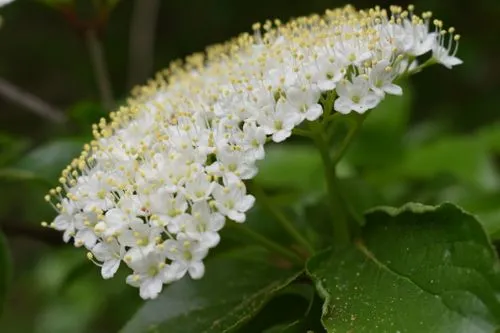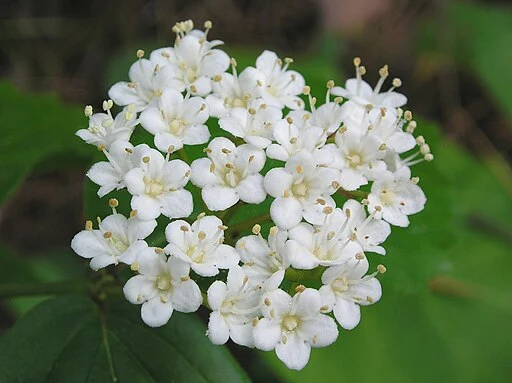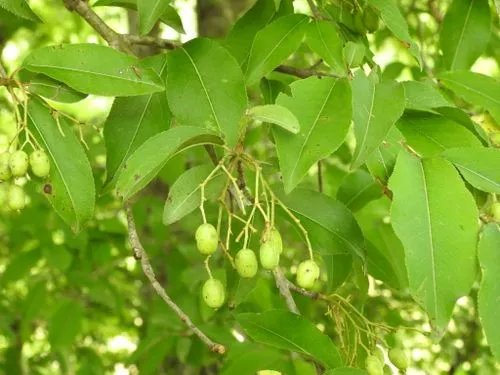Table of Contents for Blue Vervain (Verbena hastata)
Blue Vervain (Verbena hastata) is a herbaceous perennial that is found throughout the United States and most of Canada except for Alberta and the far northern reaches. This plant is a host for the common buckeye (Junonia coenia) butterfly. The blue to purple flowers bloom in the summer (June to October) and it is hardy in zones 3-8. Its habitat generally includes moist open areas such as meadows, marshes, and stream edges.
Taxonomy and Naming of Blue Vervain (Verbena hastata)
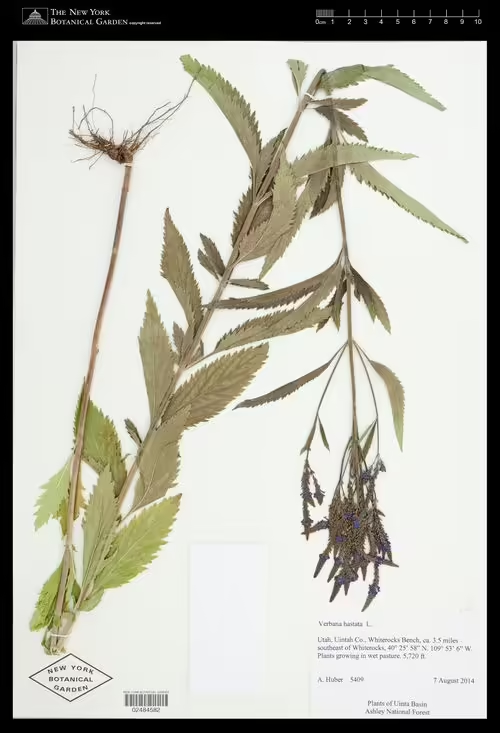
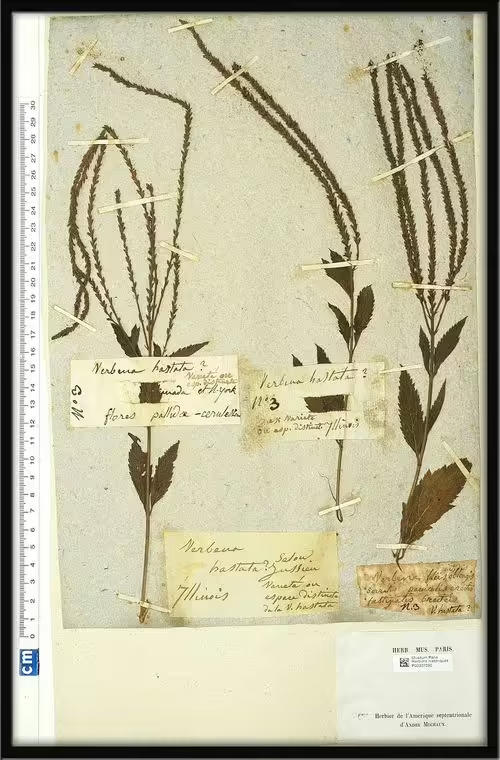
Taxonomy
Blue Vervain (Verbena hastata) was named and described by Carl von Linnaeus in Species Plantarum (1753). This plant is a member of the Vervain Family (Verbenaceae).
Synonyms
- Verbena carolina
- Verbena hastata var. scabra
- Verbena polystachya
Meaning of the Scientific and Common Names
Scientific Name
The genus name, Verbena, derives from the Latin for religious ceremonies and medicine. The species name, hastata, means spear-like and refers to the flower cluster shape (Missouri Botanical Garden).
Common Names and Alternative Names
The common name, as used in this post, is in reference to the blue color of the flowers. However, there are many alternate names for this species. Some of the names are derive from the flower color and include purple vervain, common vervain, and blue verbena. Others refer to the shape of the flower clusters such as simpler’s joy. Some describe the habitat and include swamp verbena and swamp vervain. There are many more as described by (Moldenke 1963).
Physical Description
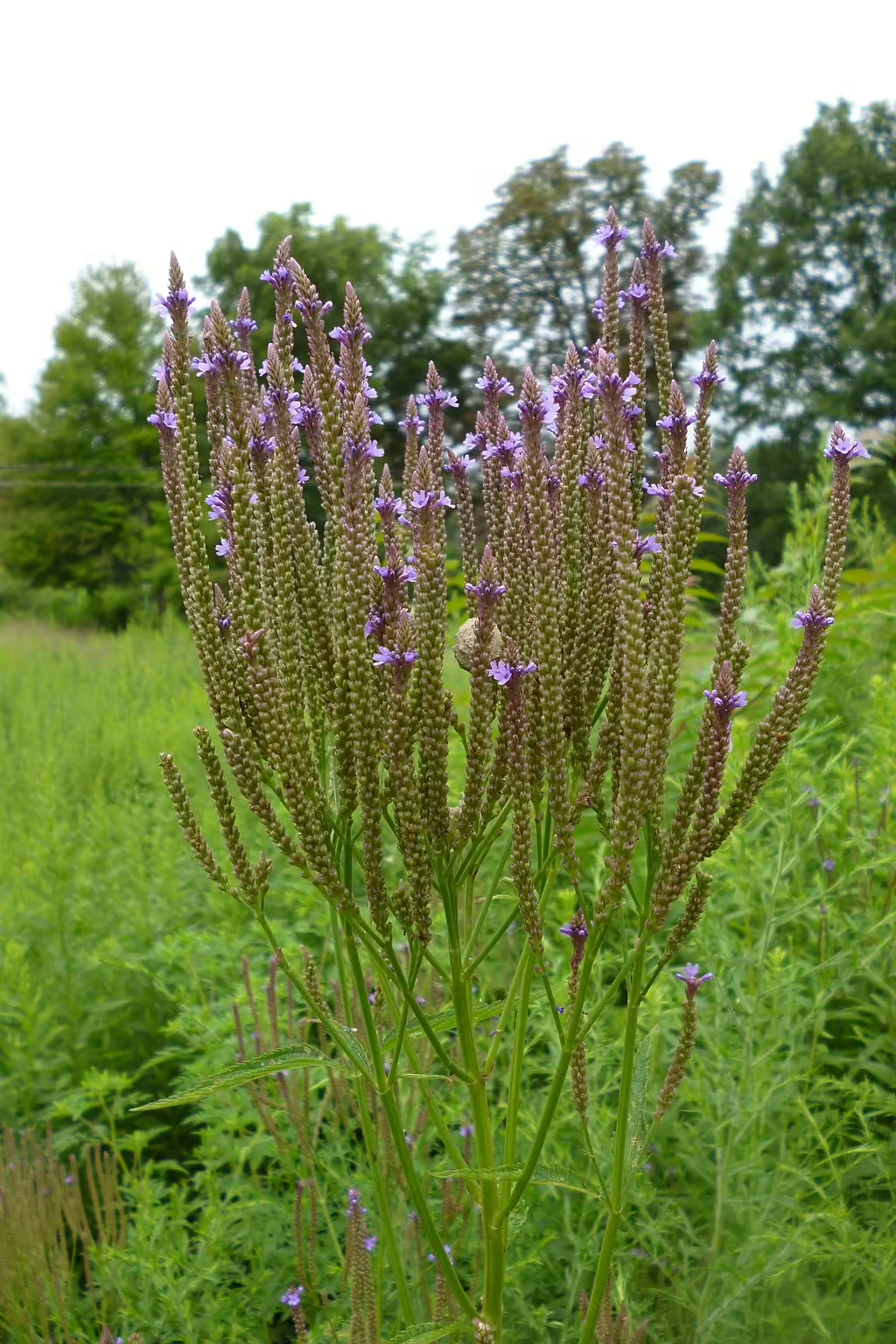
- Plant Type: Herbaceous perennial
- Height: about 2 to 5 (6) feet tall
- Leaves: opposite, simple, lanceolate leaves with double-serrate margins that grow up to 3-6 inches in length and 1-3 inches in width.
- Stem: Pubescent square stem that can be green to red in color
- Flower color: Blue to purple
- Blooming period: June to September
- Fruiting type and period: Brown to red nut that matures soon after the flowers
Range of Blue Vervain (Verbena hastata) in the United States and Canada
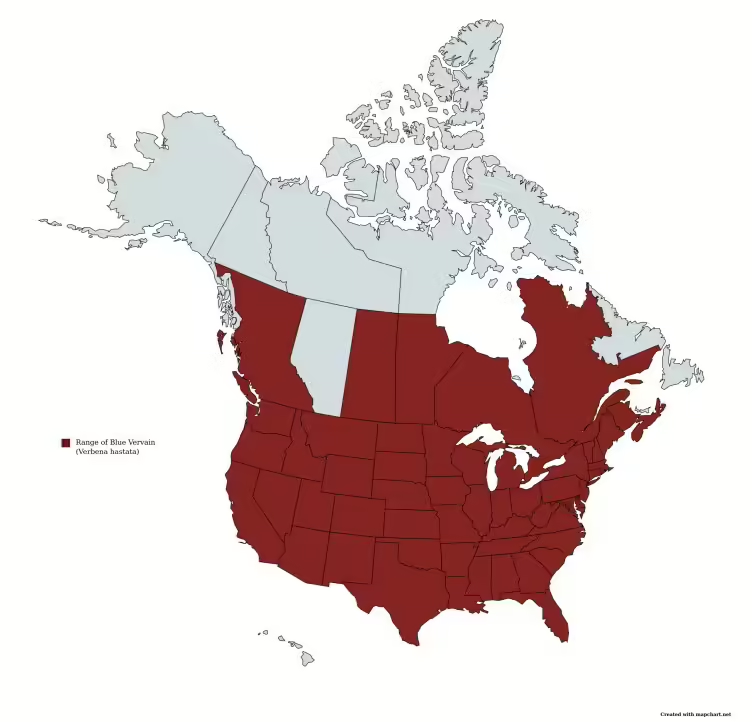
This species is native to the throughout the United States and most of Canada except for Alberta and the far northern reaches. It is considered rare in the southeastern United States from North Carolina to Texas, Nevada and the provinces of British Columbia, Manitoba, and Nova Scotia in Canada.
Habitat of Blue Vervain
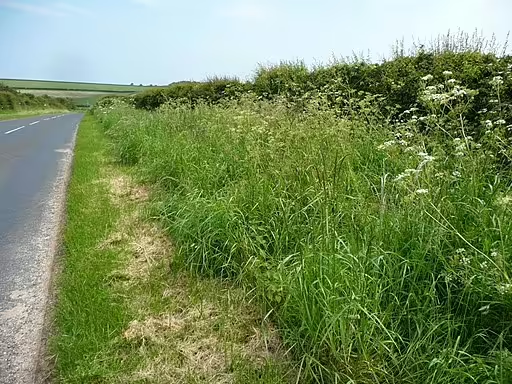
This species grows in open moist areas such as fields, roadsides, shores, meadows, and marshes. However, it can also be found in waste places and dry areas such as sand (Moldenke 1963).
Hosted Species
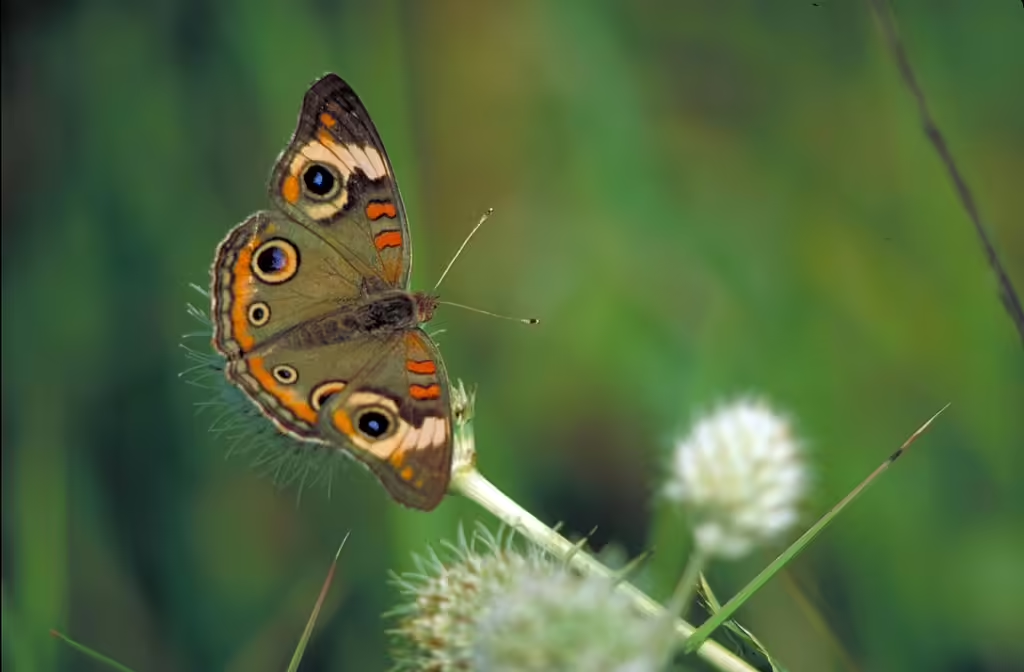
Blue vervain hosts the Common Buckeye (Junonia coenia) butterfly in the east and west. Calscapes, the page for the California Native Plant Society, also lists this species as hosting the bilobed looper moth (Megalographa biloba), the oblique-banded leafroller moth (Choristoneura rosaceana), the lantana stick caterpillar (Neogalea sunia), the fine-lined sallow (Catabena lineolata) and the omnivorous looper (Sabuloides aegrotata).
Other Supported Wildlife
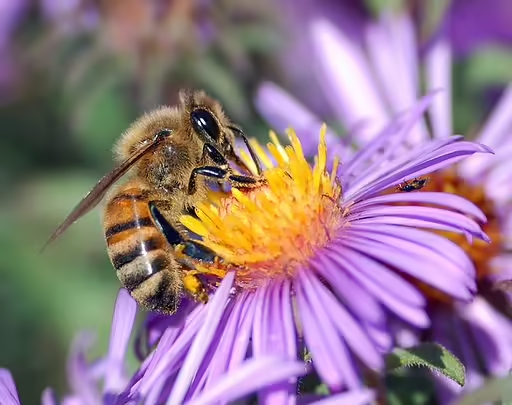
This species is a nectar plant for a lot of bees, wasps, butterflies and flies. In the fall, numerous species of birds enjoy the seeds and rabbits are known to browse on the vegetative parts of the plant.
Frequently Asked Questions
Is this plant poisonous?
The ASPCA does not list this plant as poisonous for pets. In addition, the NC Extension Gardener, does have a warning that this plant is poisonous, though it says large amounts can cause vomiting and diarrhea.
How has blue vervain been used?
Blue vervain is used in gardens as an ornamental plant to attract butterflies and other pollinators. The Native American Ethnobotany Database lists 28 different medicinal uses for this species. Some of the uses include pain relief, cold suppressants, skin diseases, and gastrointestinal uses. Another use is as food/beverage.
What other vervains are similar to this one?
This species is part of a group of vervains that have distinct petioled leaves. It can be told from the others in that one has a white flower, white vervain (Verbena urticifolia) and the other has the leaf blade descending all the way to the stem, rough vervain (Verbena scabra).
Is it invasive?
This plant does not seem to show invasive characteristics, although it can form dense colonies in its native habitat. However it is considered to be invasive in Belgium where it has been introduced (GBIF).
Is it deer resistant?
This species seems to be deer resistant, presumably because of the bitter taste of the foliage and stem. So far, deer browsing of this plant has not been noticed in the McMullen House gardens. However, the NC Extension Gardener, states that this species is a favorite of rabbits, however, even this has not been noted in the McMullen House gardens.
What are some companion plants?
Since this plant is an important nectar species for bees, it it helpful to have other plants around it that attract bees. At the McMullen House garden we have sweet Joe-Pye weed (Eutrochium purpureum), New England Aster (Symphyotrichum novae-angliae), goldenrod (Solidago spp.), and yellow-cup (Silphium perfoliatum) planted around the vervain. This gives the pollinators a plant to go to throughout the summer and fall seasons.
Gardening with Blue Vervain
Add Blue Vervain to your Garden
The link below takes you to our product page where we get a small commission from your purchase at no additional cost to you.
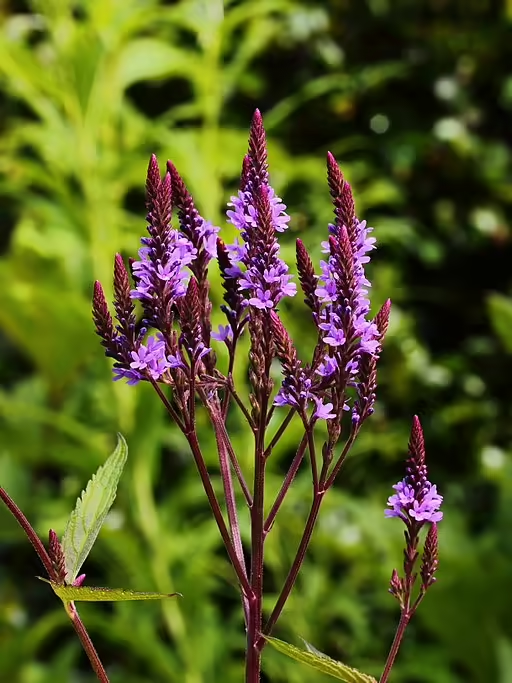
Hardiness
Blue vervain is hardy in zones 3-9 and prefers open areas with full sun or partial shade and moist well-drained soil, but it can handle drier conditions. Even though some sources, say it can handle up to zone 9, it seems to prefer cooler climates and may be the reason, in part, that it is considered rare in the southeastern United States.
Cultivars
- ‘rosea’ : A cultivar, called pink-flowered Blue vervain, that has pink flowers instead of the common blue to purple.
Optimal Conditions
These plants prefer places that have full sun or partial shade. Soils should generally be moist and drained, but it can tolerate dryness for short periods. This plant gives the garden a blue color before the blue asters come out later in the fall.
Additional Notes
This species can easily be propagated by seeds, division or cutting.
References
- Moldenke, Harold N. 1963. Materials toward a monograph of the genus Verbena. XII Phytologia 9:189-238.
